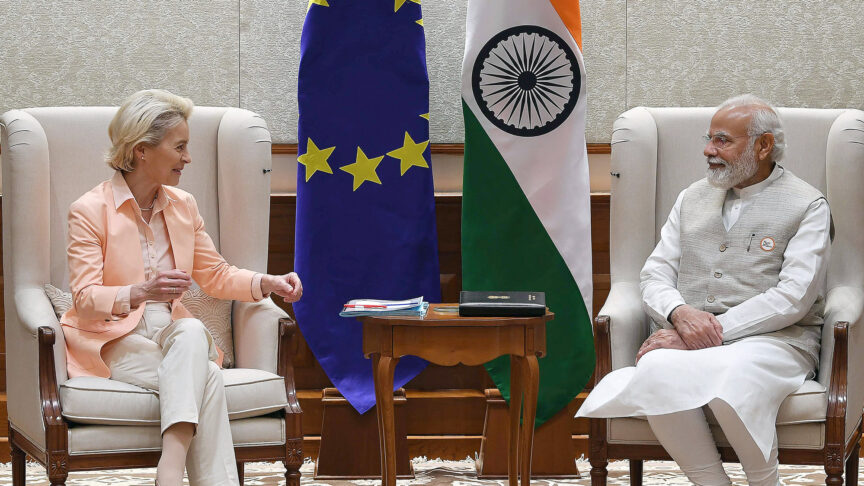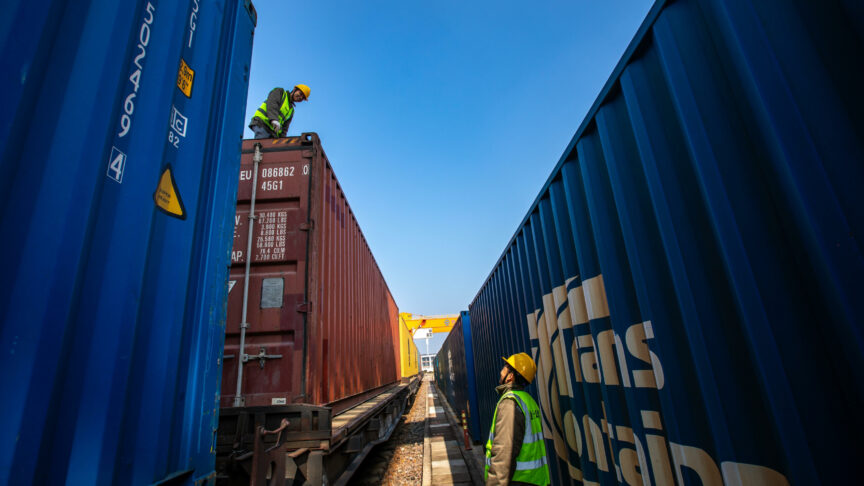Trading places: Europe and China in 2020
The US-China trade deal could make life tougher for Europe. But there are risks for China too in provoking greater coalition-building against it.
This week, China’s vice-premier, Liu He, flies to Washington to sign a trade deal with the United States. As he does so, European capitals will be watching intently as they prepare for a critical period in their own relationship with Beijing – China has dubbed this its “year of Europe”.
Over the last couple of years, the European Union was often one of the inadvertent beneficiaries of China-US tensions. As the Trump administration upended the normal order of business with China, Beijing took extra care to maintain stable ties with other major powers, to pre-empt the threat of a wider balancing coalition coalescing, and to demonstrate that a more measured approach to bilateral concerns could produce better results. Last spring, EU brinkmanship and toughened language manifested themselves in threats to cancel the planned EU-China summit and labelled China a “systemic rival”. Without the backdrop of US pressure, the EU would likely have faced pushback from Beijing in response. Instead, it elicited last-minute concessions.
Yet the context in 2020 is different. While many other dimensions of competition between the US and China will continue to intensify, the phase one trade deal that the two are due to sign this week has provided Beijing with breathing room in the run-up to November’s US election. In signing what is essentially an agreement to ramp up purchases of US products rather than the more comprehensive deal that was originally under discussion, China will go into this year’s trade and investment talks with the EU without facing a serious US push on domestic subsidies and the other structural economic changes that are still at the top of Brussels’ own negotiating agenda. On the trade front, it is the EU itself that is now in the sights of the Trump administration following the conclusion of deals with each of its other major targets, including most recently with Japan, Mexico, and Canada.
In 2019, China trod delicately around EU wishes – but Beijing is now on the offensive
Partly as a result, in 2020 Europe will find itself having to deal with a more assertive Chinese stance. While in spring 2019, China trod delicately around the EU’s moves to set a new policy direction, Beijing is now on the offensive. Late last year China’s foreign minister, Wang Yi, delivered a speech in Brussels in which he attacked virtually all the new elements of the European approach: the “systemic rival” concept; demands for greater reciprocity; and adjustments to the scope of Europe’s economic openness to China. On Huawei, Hong Kong, and human rights, Chinese public and private threats to Europe have recently become even more explicit, with Chinese ambassadors from Stockholm to Berlin delivering blunt warnings of trade repercussions if the “wrong” decisions are reached.
Prospects for a comprehensive investment agreement, once intended as the principal deliverable this year, also look dim: the EU’s top trade official, Sabine Weyand, has stated that the two sides are “not yet on a pathway” to a deal, with talks moving “at a snail’s pace”. Meanwhile, China has upgraded its divisive “17+1” meeting with central and eastern European states: its April iteration will now be chaired by Xi Jinping. European officials regard this as a Chinese move to undercut one of the goals of the Leipzig summit scheduled for September 2020, which Berlin had intended as a demonstration that central and eastern European states would gain more from China by working through EU formats. Indeed, there is every prospect that the German gathering between Xi and European leaders could end up a disappointment, an embarrassment, or a showdown. It is shaping up to be a bruising nine months for Europe on the China account.
The US factor will then loom large again in Leipzig’s aftermath. The remaining months of Germany’s EU presidency in the second half of 2020 will almost certainly see another serious collective reassessment in Brussels and national capitals over whether to further harden the balance of the cooperative, competitive, and rivalrous elements in the European approach to China. What that stocktaking amounts to will be conditioned by the US election in November.
For all that recent shifts in US China policy have had a bipartisan quality, the differences in approach between a Trump administration and most imaginable Democratic administrations would alter European deliberations significantly. Democrats have almost uniformly emphasised that their approach to China would give greater prominence to partners and allies, including the EU itself. Beyond trade, this is still more of a talking point rather than a fleshed-out set of proposals. But on trade alone there is little question that a very different political context would emerge from the removal of current and threatened section 232 tariffs on the EU, a less scorched-earth approach to the World Trade Organization, and a move away from fixating on bilateral deficits. In other areas too, there are likely versions of a Democratic platform that would be equally tough on China but that fall more closely into line with the EU and other US allies. This would include the resumption of limited aspects of cooperation with China on issues such as climate change; a re-engagement with the multilateral system where Beijing has taken advantage of spaces that the Trump administration has vacated; and a more committed approach to values issues in the China relationship than the current US president has adopted.
For all the EU might expect to achieve with Japan, India, and others, the US will remain the critical counterpart on China policy
Even in the event of Trump’s re-election, both Europe and the US will be wrestling with the same leverage problem when it comes to China. The last two years have been – in part – an experiment in whether the US has the unilateral capacity to bring about a major shift in Chinese economic practices. While the escalation of tariffs has, alongside tightened investment restrictions and export controls, helped to expedite the decoupling of the two economies in certain areas, it has not induced the Chinese government to rethink the viability of its model. But a maximally “strategically autonomous” EU clearly cannot be expected to achieve this either. As things stand, the best-case scenario for Europe’s approach to China this year would, inter alia, see the EU establishing: an ambitious industrial strategy and set of connectivity plans; a harder-edged approach to trade enforcement; a new China-centred antitrust instrument; reciprocity measures for government procurement; and a heightened security and values focus in its handling of telecoms, data, and wider digital issues.
All this would considerably strengthen Europe’s capacity to protect its principles and interests. But beyond defensive instruments, any hopes of exerting effective pressure on Beijing or shaping the broader political and economic landscape in which China operates will require wider coalitions to pull together in several critical areas. And for all that the EU might expect to achieve with Japan, India, Australia, Canada, a post-Brexit United Kingdom, and other like-minded partners, the US will remain the critical counterpart.
A major part of Europe’s 2020 China agenda will remain internal. The battles over Europe’s China policy – and many of the broader adjustments that will result from it – are going to be intense, and will play out amid considerably greater pressures from Beijing. But there is a real risk for China too. If its “year of Europe” pans out the way many European officials expect, it is not just the EU’s approach that would head further in the direction of competition and systemic rivalry. There is potential for 2020 to mark the beginnings of more concerted coalition-building efforts among liberal democracies which – for all their differences – still have substantial areas of common ground on China, and are starting to face up to the limits of what they can hope to achieve alone.
The European Council on Foreign Relations does not take collective positions. ECFR publications only represent the views of their individual authors.


